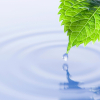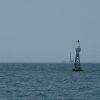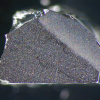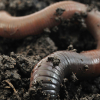Sotiris Stasinos and Ioannis Zabetakis*
Food Chemistry Laboratory, Department of Chemistry, University of Athens, 15771 Athens, Greece. E-mail: [email protected]
Introduction
This article is based on our previous paper.1 Heavy metals do not biodegrade in the environment and readily bioaccumulate to toxic levels.2 Anthropogenic activities are the main sources of heavy metal contamination in plants,3 especially in countries where domestic and industrial waste is widely applied to the land for irrigation purposes.
The impact on our diet of contaminated crops such as carrots, onions and potatoes is of great importance4,5 as it has been proved that serious systemic health problems can develop as a result of excessive accumulation of dietary heavy metals in the human body.6
Our team in the Laboratory of Food Chemistry and Analytical Chemistry (Deptartment of Chemistry, University of Athens) has analysed the levels of heavy metals in carrots, onions and potatoes cultivated in the Asopos region in central Greece; this is the second largest industrial area in Greece and an area where the water bed is polluted by heavy metals.7 The results showed that the levels of nickel (Ni) and chromium (Cr) in Asopos food were up to nine times higher than the respective levels of the plants grown in non-polluted areas. The impact of these trace elements on the concentrations of secondary metabolites and antioxidant activity in the above-mentioned tuber plants has also been studied by our team and the results showed that, in carrots, the levels of b-carotene and in potatoes, the levels of lutein, both from the Asopos area, were statistically significantly lower compared to the control ones.8
In a further study,1 we also investigated the uptake of Ni and Cr added in known levels to the irrigation water, by potatoes, carrots and onions. The plants were cultivated in a soil which had never previously been polluted with Cr and Ni from external sources. The levels of Cr(VI) and Ni(II) used in irrigation water were similar to those that can actually be found in the two polluted areas (Asopos river and Messapia, due to polluted underground waters).
Plant cultivation in a greenhouse
An installation consisting of six irrigation lines (i.e. six plastic tanks, six pumps and six series of three tubs per series) was constructed in a greenhouse, see Figure 1. One species of tubers per tub was cultivated (i.e. either carrots or potatoes or onions).

Figure 1. Photograph depicting the three parallel greenhouse series for cultivation of green onions, carrots and potatoes. The permission of Elsevier to reproduce this figure is acknowledged.
The tubers were irrigated with water solutions containing different levels of Cr(VI) and Ni(II), prepared by solid K2Cr2O7 and NiCl2*6H2O, respectively. The six lines, of three tubs per line, were watered as follows: 0 (control), 10 µg L–1, 20 µg L–1, 50 µg L–1, 100 µg L–1 and 250 µg L–1 in tap water solutions of both Cr(VI) and Ni(II). All the plants were regularly fertilised. At harvest, carrots, potatoes and green onions were taken from the tubs, separated from non-edible parts, peeled, macerated, freeze dried and pulverised by mortar and pestle. Samples of pulverised plants were then diluted in suprapure HNO3 and microwave digested, diluted by distilled water and analysed in triplicates by inductively-coupled plasma mass spectrometry (ICP-MS) for their Cr and Ni content. Blank samples and samples containing Standard Reference Material NIST 1573A (tomato leaves) were also digested and analysed. Similar preparations were made for samples of tub soil collected at 0–10 cm and 10–20 cm depths and each was analysed in triplicate by ICP-MS for levels of Cr and Ni. Blank samples and samples containing Certified Reference Material BCR–143R (sewage sludge amended soil) were also digested and analysed.
Instrumentation
The instrument used for elemental determination was an X-series ICP-MS (Thermo Electron Elemental Analysis, Winsford, UK) and the digestions of plants and soils were performed in a microwave oven digester MWS-2 Speed Wave microwave system.9
Results
Correlation between the levels of Cr(VI) and Ni(II) in irrigation water and the levels of total Cr and Ni in plants
The levels of Cr and Ni in the tubers, depending on the concentration of the metals in the irrigation water, are displayed in Figures 2(a), 2(b), 2(c) and 2(d).

Figure 2. Cr and Ni concentrations in carrots, onion shoots, onion leaves and potatoes, depending on the Cr(VI) and Ni(II) concentration in irrigation water. Spearman’s (coefficient of rank correlation) rho and p values indicate potential correlation. The permission of Elsevier to reproduce this figure is acknowledged.
The statistical analysis showed a negative correlation between the level of Cr in carrots and the level of metals in the irrigation water. Also, the levels of Ni in potatoes negatively correlated to the concentration of metals in the irrigation water, indicating that Cr in carrots and Ni in potatoes, under specific conditions, may pass through the tubers to other parts of the plant (maybe the roots or upper parts).
Comparison between “control” and “250 µg L–1” plant groups
The levels of Cr in carrots irrigated with 250 µg L–1 Cr and Ni were significantly lower than the levels in carrots irrigated with control water. In contrast, the levels of Cr in onion leaves were significantly higher in tubs irrigated with 250 µg L–1 Cr and Ni compared to the onion leaves in tubs irrigated with control water. Also, the levels of Ni in onion shoots and leaves were higher in tubs irrigated with Cr and Ni concentrations of 250 µg L–1 compared to the levels in onion shoots and leaves in tubs irrigated with control water. The difference in onion shoots was statistically significant and in onion leaves was statistically marginally significant. The levels of Ni in potatoes were significantly lower in tubs irrigated with 250 µg L–1 compared to the respective levels of potatoes irrigated with control water.
“Two-by-two” comparisons
The statistical analysis of the results of comparisons between groups of plants irrigated with Cr and Ni (10 µg L–1 to 100 µg L–1) and the group of plants irrigated with clean (control) water also led to the conclusion that Ni and Cr can pass directly through irrigation water to onions (shoots and leaves) and there was strong evidence that Ni can also pass to potato tubers, depending on the irrigation concentration of the two heavy metals.
Bivariate (total Cr and Ni) correlations within each plant
The results showed that there may be synergies (i.e. the two heavy metals are absorbed proportionally, possibly through a common absorption system) between Cr and Ni, in specific metal concentrations, for carrots, onions and potatoes. No evidence of active resistance was found between Cr and Ni in any plants irrigated with any concentrations of the two metals in water.
Conclusions
The analysis of the above results led to the conclusion that Ni and Cr (as total Ni and Cr) can pass directly through irrigation water to onions (shoots and leaves) and there is strong evidence that Ni can also pass to potato tubers, depending on the irrigation concentration of the two heavy metals. More specifically, onions and potatoes, cultivated in a never previously anthropogenically polluted soil, irrigated for the first time with Ni(II) and Cr(VI) concentrations that can be found in nature (in polluted underground waters) can be cross-contaminated by Ni and Cr in the irrigation water. No evidence was found in this experiment that Cr and Ni can cross-contaminate carrot bulbs.
Farmers using Cr(VI) and Ni(II) polluted water for irrigation purposes should be supplied with clean irrigation water, in order to minimise heavy-metal cross-contamination of the food chain.
As a consequence of our analyses, the European Food Safety Authority (EFSA) has been informed about the accumulation of Cr and Ni in food tubers, as outlined above1,7 and has initiated, after a request from the Food Safety Authorities of Greece, two scientific questions (under Article 29: Question type: Scientific opinion) on Ni (EFSA-Q-2012-00378) and Cr (EFSA-Q-2012-00379), with deadlines at 31 December 2014 and 31 December 2013, respectively.
It is anticipated that EFSA will assess the risk of Cr and Ni found in vegetables and drinking water to human health, taking into consideration the other known sources of human exposure (for example, cigarette smoke, air) of the two heavy metals, aiming, in particular, towards the protection of the most vulnerable groups of the population (children, elderly and pregnant women). These results and the corresponding decision by EFSA should finally lead to the setting of legal limits for the rest of the heavy metals found in the food chain, in addition to the four (i.e. lead, cadmium, mercury, tin) for which there are already limits in the existing legislation (Commission Regulation EC 1881/2006).
References
- S. Stasinos and I. Zabetakis, “The uptake of nickel and chromium from irrigation water by potatoes, carrots and onions”, Ecotox. Environ. Safe. 91(1), 122 (2013). doi: 10.1016/j.ecoenv.2013.01.023
- R.K Sharma, M. Agrawal and F. Marshal, “Heavy metal contamination of soil and vegetables in suburban areas of Varanasi”, Ecotox. Environ. Safe. 66(2), 258 (2007). doi: 10.1016/j.ecoenv.2005.11.007
- M. Muchuweti, J.W Birkett, E. Chinyanga, R. Zvauya, M.D. Scrimshaw and J.N Lester, “Heavy metal content of vegetables irrigated with mixtures of wastewater and sewage sludge in Zimbabwe. Implications for human health”, Agr. Ecosyst. Environ, 112(1), 41 (2006). doi: 10.1016/j.agee.2005.04.028
- M.I. Zaidi, A. Asrar, A. Mansoor and M.A. Farooqui., “The heavy metal concentrations along roadside trees of Quetta and its effects on public health”, J. Appl. Sci. 5(4), 798 (2005).
- R.K. Sharma, M. Agrawal and F. Marshal, “Heavy metals in vegetables collected from production and market sites of a tropical urban area of India”, Food Chem. Toxicol. 47(3), 583 (2009). doi: 10.1016/j.fct.2008.12.016
- M.A. Oliver, “Soil and human health: a review”, Eur. J. Soil Sci. 48(4), 573 (1997). doi: 10.1111/j.1365-2389.1997.tb00558.x
- C.G. Kirkillis, I.N. Pasias, S. Miniadis-Meimaroglou, N.S. Thomaidis and I. Zabetakis. “Concentration levels of trace elements in carrots, onions and potatoes cultivated in Asopos Region, Central Greece,” Anal. Lett. 45(5–6), 551 (2012). doi: 10.1080/00032719.2011.649460
- E. Flemotomou, T. Molyviatis and I. Zabetakis, “The effect of trace elements accumulation on the levels of secondary metabolites and antioxidant activity in carrots, onions and potatoes”, Food Nutr. Sci. 2(10), 1071 (2011). doi: 10.4236/fns.2011.210143
Anal. Bioanal.Chem. 387(8), 2617 (2007). doi: 10.1007/s00216-007-1171-9










